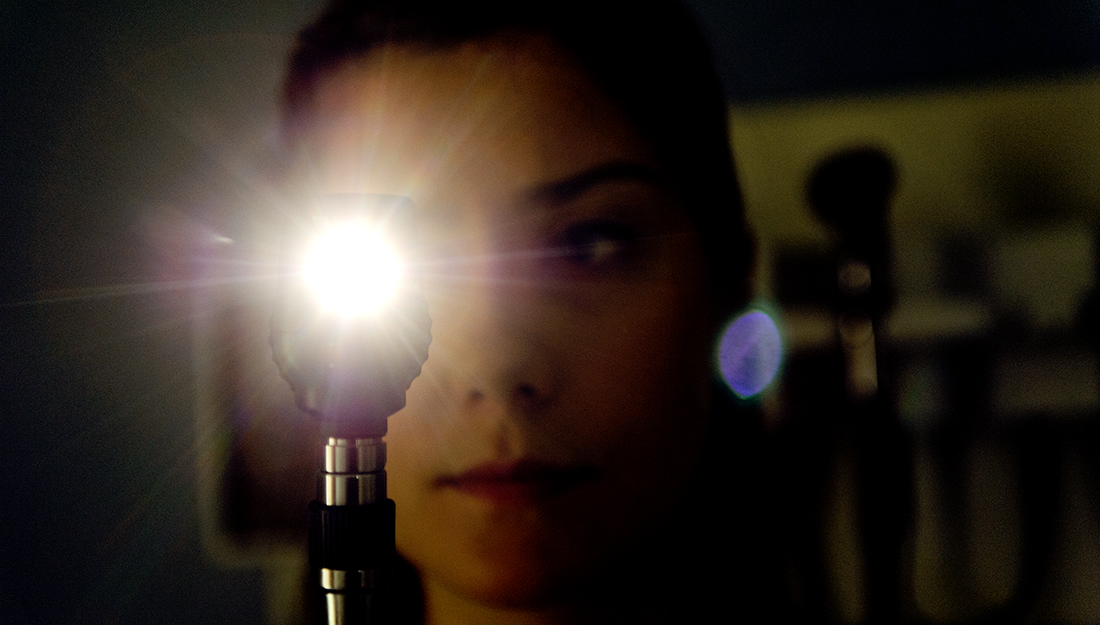- Christina Sumners
- Dentistry, Research, Show on VR homepage
Shedding light on migraine headache relief
Texas A&M College of Dentistry researcher uses revolutionary technique to reduce orofacial pain

Despite decades of research, migraines are often not well controlled with medication. For those prone to this type of debilitating headache, it sometimes seems nothing can stop the pain and the sensitivity to light. But what if light itself was key to their relief?
Feng Tao, M.D., Ph.D., associate professor in the Department of Biomedical Sciences at the Texas A&M University College of Dentistry, uses a technique called optogenetic manipulation to attempt to do just that.
Optogenetics, the use of light to control neuronal activity in the nervous system, is a technique that can produce gain or loss of function in specific signaling, and recently has shown promise in restoring vision and possibly even fighting psychiatric disorders. As the name implies, it combines the stimulation of light of certain wavelengths with gene encoding for light-sensitive proteins to specifically regulate neuronal function. In this case, it allows for very precise control of activities of neural circuits in the central nervous system.
“If we can use optogenetic stimulation to manipulate neuronal activities in the neural circuits that contribute to the development of migraines, we could possibly reduce migraine headaches,” Tao said.
Of course, neurons don’t generally have light-sensitive proteins, so the scientists use a specially engineered virus to express certain specific genes that code for these proteins that can then be activated with a laser implanted in the brain. After laser fiber implantation in an animal, the researchers can activate the laser at different wavelengths to either excite or inhibit neurons in different brain areas while the animal is awake and moving around.
“A certain light-sensitive protein will only be activated with blue light and will then excite a neuron in the brain, while another type of light-sensitive proteins will only be activated with yellow light, and will then inhibit a neuron in the brain,” Tao said. “This way, we can regulate—either excite or inhibit—the neuronal function.” Such a system allows for very precise control, neuron by neuron, that can be turned off and on at will.
Although at the moment, the laser still has to be controlled manually, Tao and his team hope to collaborate with electrical engineers to eventually be able to put a sensor into the brain and then control it wirelessly.
“This technology won’t just be used for biomedical research,” Tao said. “We hope we will be able to move it into clinical trials to treat intractable pain.”
Media contact: media@tamu.edu


